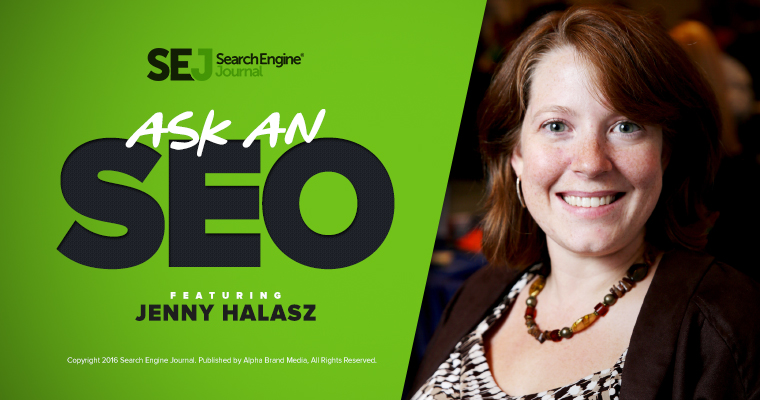Competing for Difficult Keywords, Indexing Issues & Canonicals

In this latest installment of #AskAnSEO, Jenny Halasz talks about H tag use, canonicals, indexing, and more.
How To Fix Canonical Is Missing?
✅https://sitechecker.pro/ – check your website for Canonical Tag Errors
In this video, we will cover “Canonical is missing” warning on Sitechecker.
Why It’s Important
According to Google, a canonical URL is the URL of the page that Google thinks is most representative from a set of duplicate pages on your site. For example, if you have URLs for the same page (for example: example.com?dress=1234 and example.com/dresses/1234), Google chooses one as canonical. Note that the pages do not need to be absolutely identical; minor changes in sorting or filtering of list pages do not make the page unique (for example, sorting by price or filtering by item color).
The rel=canonical tag is an HTML element located in the head of an HTML document and aids in preventing duplicate content issues.
A typical rel=canonical tag:
link rel=”canonical” href=”http://www.example.com/”
It often happens that multiple URLs lead to the same page content (this is especially true when making use of URL parameters). Alternatively, there might be a huge content similarity between multiple pages, in which case it would make sense to only crawl or index one of them. In both cases, the webmaster might use the rel=canonical element to identify which of the mentioned URLs are representative of the entire collection, in other words, which one is the preferred or “canonical” URL that needs to be indexed.
Omitting the rel=”canonical” tag doesn’t denote a duplicate content issue. Nevertheless, when having many pages with highly similar or duplicated content, omitting this rel=canoncial tag can result in such issues with a high probability. Note that duplicate content issues can be highly detrimental to your site in terms of SEO.
Google uses the canonical pages as the main sources to evaluate content and quality. Google Search result usually points to the canonical page, unless one of the duplicates is explicitly better suited for a user: for example, the search result will probably point to the mobile page if the user is on a mobile device, even if the desktop page is marked as canonical.
How to Check and Fix the Issue?
Check the URLs in question and in case duplicate or highly similar content is detected, act to resolve the issue. First, decide which of the URLs with resembling or duplicated content should be chosen as the canonical version. Next, add the rel=canonical tag to all pages in the respective group of URLs, while pointing the target to the preferred (canonical) URL.
Keyword Difficulty Index SEMRush – How to Find the Competitiveness of a Keyword
How to Find the Keyword Difficulty Index SEMRush
SEMRush Free Trial: http://bit.ly/semrushseo
Join me every Monday on weekly entrepreneur VLOGS with inspiration to continue hustling towards your dreams.
If you’re new to the show or you haven’t done it yet, make sure you subscribe on both the youtube channel and the podcast, as we will continue to create top-notch motivational content for you.
Visit Our Website: http://www.thehustleshow.co
Like Me on FB: https://www.facebook.com/thehustleshowpage/
Follow Me on IG: https://www.instagram.com/christianfromthehustleshow/
Subscribe on Youtube: https://www.youtube.com/c/thehustleshow
Subscribe on iTunes: http://www.thehustleshow.co/itunes
Subscribe on Podbean: https://thehustleshow.podbean.com/
What do I do if I’m not Indexed? | Helium 10 | Index Checker Pro Training
“What do I do if I’m not indexed on Amazon?”… “Is my keyword indexed”… “How do I check Amazon keyword indexing?” … These are common indexing questions we encounter from our community. If you’re concerned about Amazon indexing, take Helium 10’s Index Checker for a spin. Our friendly neighborhood success manager, Bradley Sutton, is here to give you a rundown.
If you’re not a Helium 10 member yet and you sell on Amazon, what’s holding you back? Sign up here today to take advantage of great tools like Index Checker: https://members.helium10.com/user/signin
Get insider access on the latest Amazon FBA trends and other great content: https://www.helium10.com/blog/
Get more Helium 10 updates from our Facebook page: https://www.facebook.com/Helium10Software/
How to Use Canonical Tags for Multiple Articles Targeting The Same Keyword
If you have written multiple articles that target the same keyword, Google and other search engines wouldn’t know how to rank all of them, so you need to help them decide which is the main article they should rank.
Although the content of each article is different, for example, reviews on different versions of the same product, you should always add a canonical URL to your older review articles pointing to the new article, so search engines will know you want them to rank the latest article.
�� Understanding Canonical URLs: https://rankmath.com/blog/canonical-urls/
�� Rank Math Canonical URLs Tutorial: https://rankmath.com/kb/how-to-change-canonical-url/
Rank Math Links:
► Knowledge Base: https://rankmath.com/kb/
Connect with Rank Math:
► https://www.facebook.com/groups/rankmathseopluginwordpress
► https://twitter.com/rankmathseo
► https://www.linkedin.com/company/rankmath/
#Shorts
#canonical #canonicalurl #canonicalization #canonicalize #canonicalizationurl #canonicalizationpage #canonicalizationpageurl #canonicalization #canonicalizationstrategy #canonicalizationstrategies #canonicalisation #canonicalisationstrategy